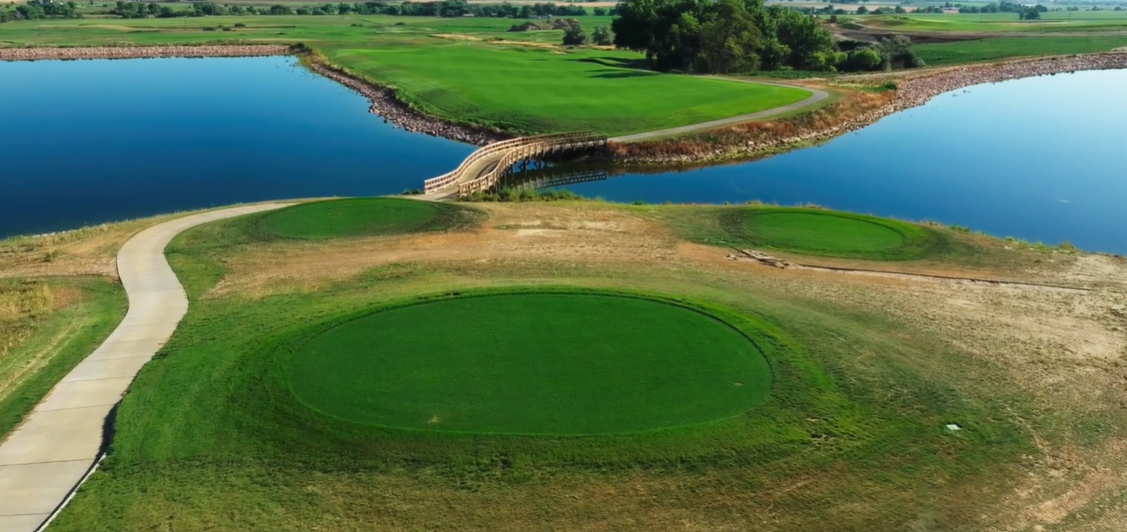Providing an Exceptional Golf Experience
A striking new chapter in Colorado’s golf scene is about to begin. Nestled in the picturesque Front Range town of Johnstown, Bella Ridge Golf Club is set to open its doors soon, bringing with it an 18-hole premium course designed to deliver an unforgettable playing experience framed by scenic views of Longs Peak.
Positioned between Denver and Fort Collins, Bella Ridge aims to be more than just another golf course—it’s designed to become a premier destination for golfers across the region and beyond.
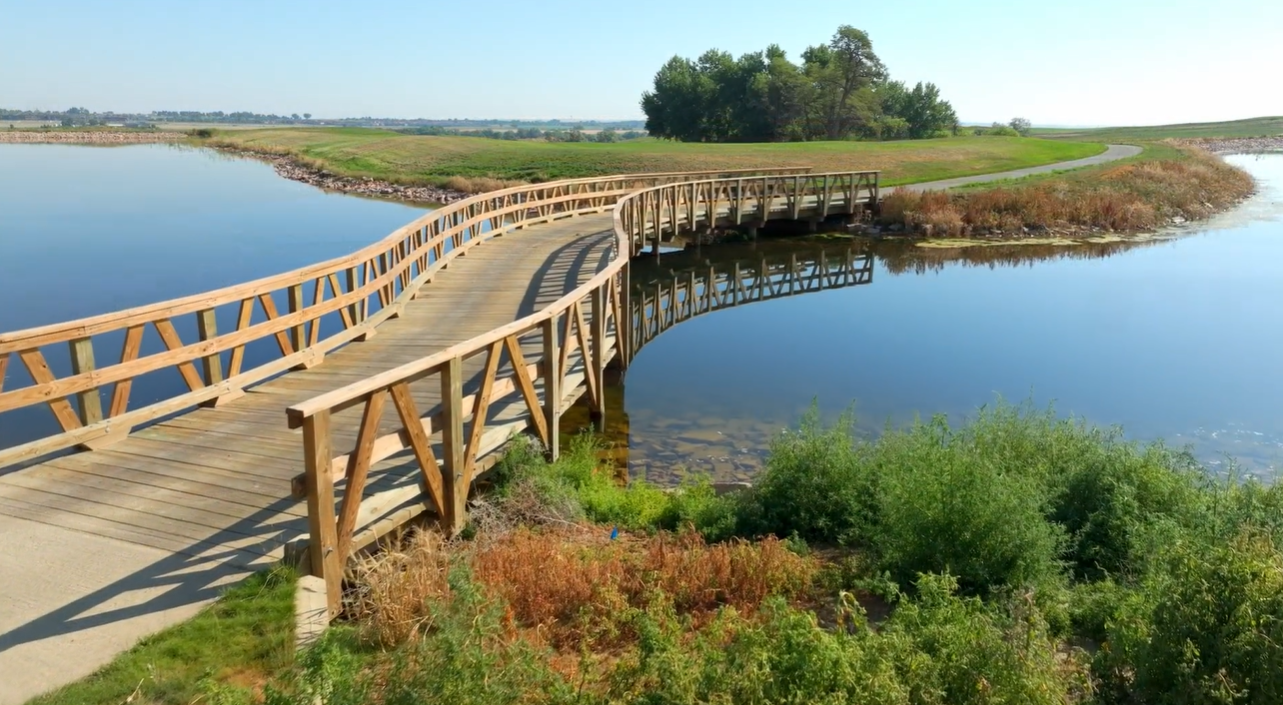
The Course
Bella Ridge Golf Club has been carefully crafted to celebrate the natural beauty of Colorado while offering a dynamic and engaging round of golf for players of all skill levels. The par-72 course features a blend of a 200-foot elevation change, 50 strategic bunker placements, and expansive fairways, all enhanced by panoramic mountain vistas and the crisp air of Northern Colorado.
Every hole was designed with intention. From the tee box to the green, players will encounter thoughtful architecture that rewards creativity and precision. Designed to blend seamlessly with the natural terrain, the layout emphasizes playability and scenery in equal measure. Each hole offers a unique perspective on the surrounding landscape, including multiple opportunities to spot Longs Peak towering in the distance.

About the Architect – Art Schaupeter
With over 25 years of experience, Arthur Schaupeter is an award-winning golf course architect known for designing innovative, engaging courses that honor the land and the game’s traditions. His portfolio includes new builds, renovations, and master plans for municipalities, private clubs, and public facilities across the country. Schaupeter’s original designs have earned national recognition from Golfweek and Golf Digest, including top rankings for The Highlands of Elgin, The Club at Old Hawthorne, and Highland Meadows. His hands-on approach and focus on playability ensure each project is both memorable and enduring.
“Golf should be an adventure… most interesting, most engaging, and, more importantly, most enjoyable when it is treated as a sport more than as a game.” – Art Schaupeter
Hole-by-Hole Breakdown
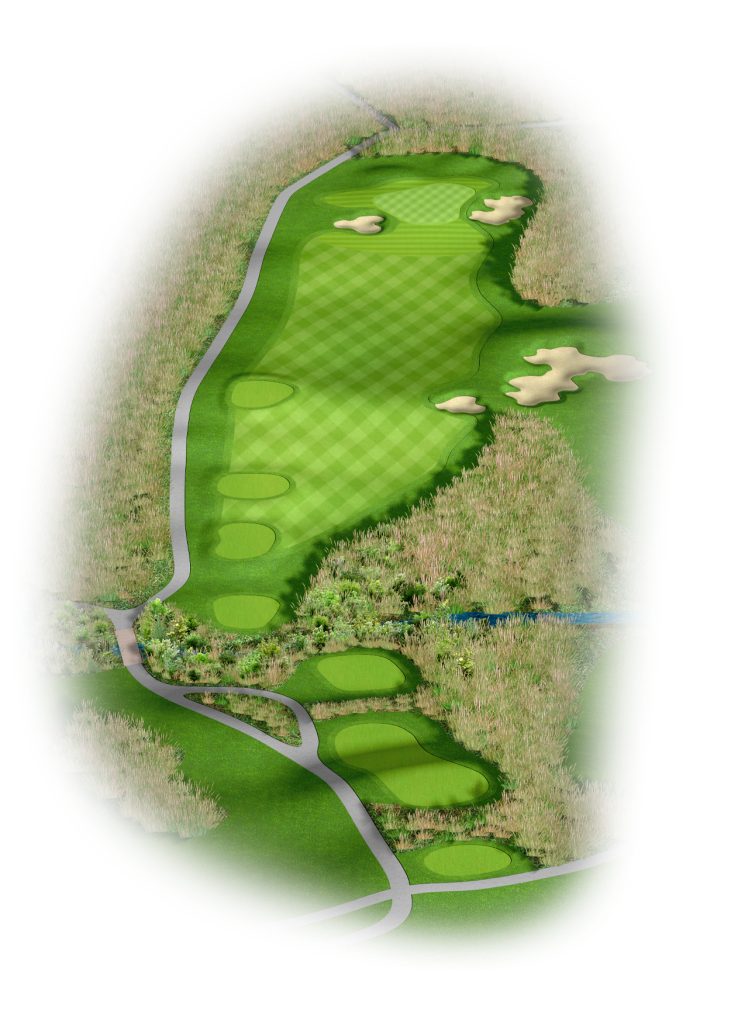
Welcome to Bella Ridge Golf Club! The opening hole serves as a friendly introduction to the round of golf. The elevated tees provide a beautiful (Bella!) overview of the hole and panorama of the Front Range Rocky Mountains in the background. This mid-length par 4 extends out in front of the golfers, with a wide, accommodating fairway awaiting the tee shot. A slight ridge extends across the fairway in the landing area and golfers that can carry the ridge will get a nice boost forward, setting up a short approach shot. A small bunker at the right side of the fairway along with a front left bunker at the green creates some subtle strategy for players to consider in terms of angles of approach to the various hole locations on the large, generally flat green.
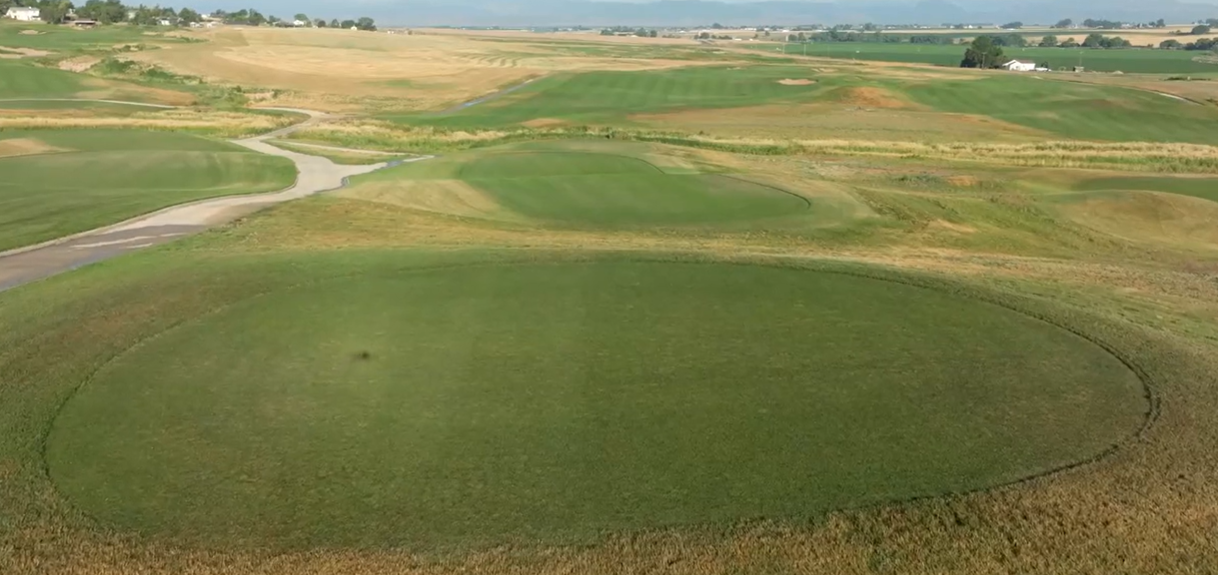
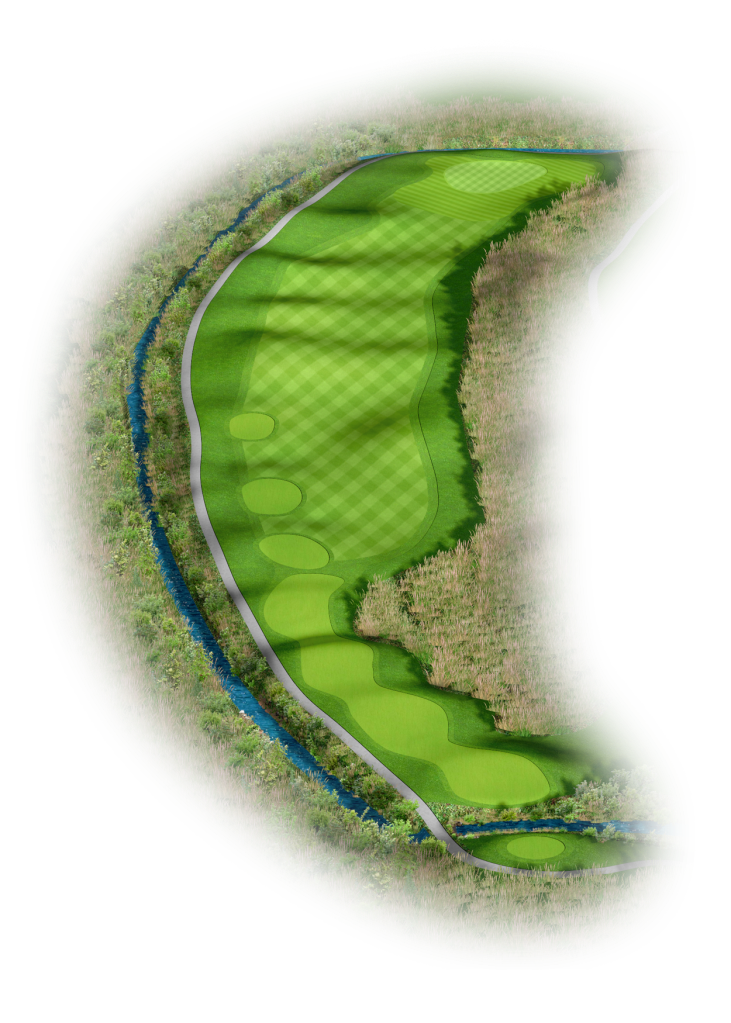
This longer par 4 builds on the opening hole in terms of hole length but it does not have any bunkers or hazards. The majestic Long’s Peak is directly behind the hole, creating a beautiful and inspiring backdrop to this longer, undulating par 4. Golfers will need to focus on hitting a strong tee shot here as the hole plays slightly uphill to a ridge that crosses the fairway. Similar to hole 1, but more importantly on this longer hole, players that can crest this ridge will get a strong boost forward, substantially shortening what will otherwise be a long approach shot. The large green is wide open at the front for running approach shots, but players will need to consider the slope of the ground and try to use the kick slopes that will carry their shots onto the green surface. Otherwise, the adjacent funnel slopes will carry shots away to the surrounding low areas where they’ll need to try and get up and down for their par.
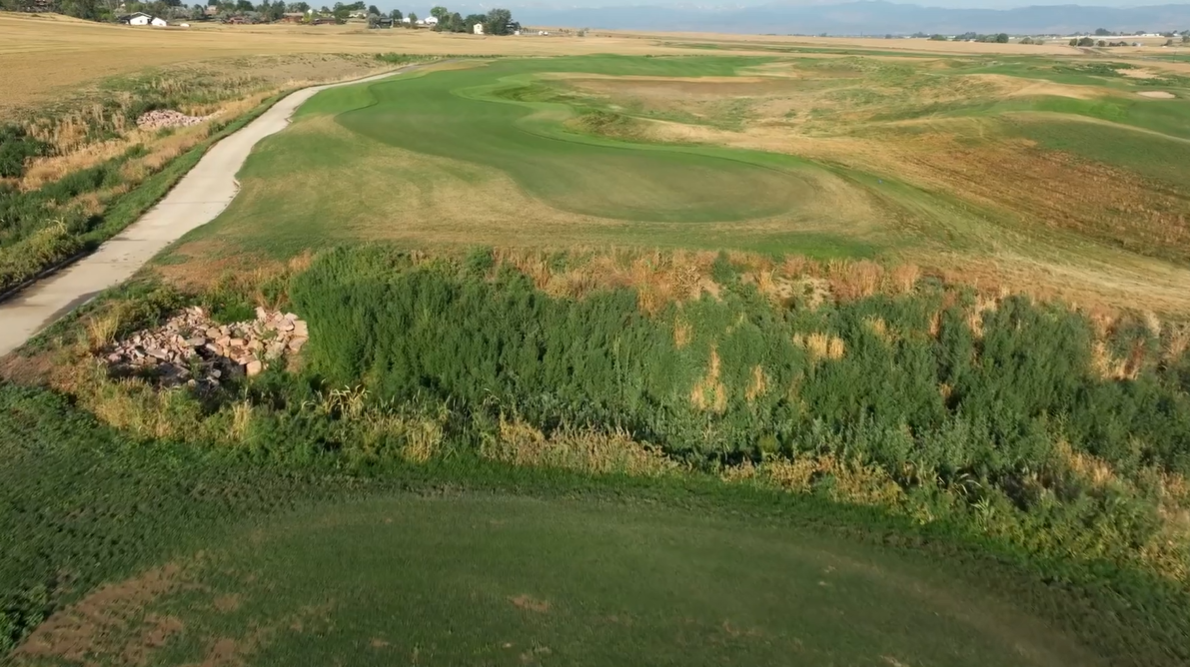
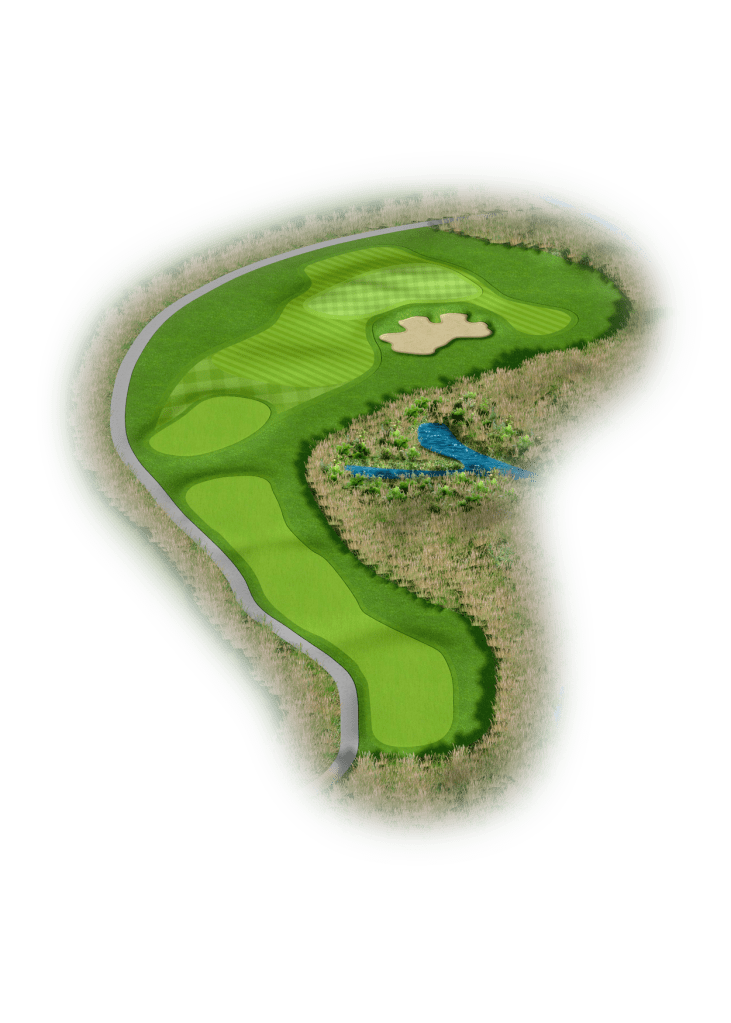
This first of the four par 3 holes starts to ratchet up the challenge and strategic considerations that will increase throughout the round. This mid-length par 3 plays just slightly uphill from tee to green. A deep fronting bunker guards the right two-thirds of the green, especially from the back tees while players playing on the middle or more forward tees will have a friendlier angle to the green. The green surface itself has a couple of stronger slopes and ridges within it, dividing the green into distinct sections. Players hoping to make birdie or par will need to hit a “precise” tee shot into the correct section of the green to avoid challenging putts. The fronting bunker combines with a quick fall-off along the back edge of the green to put a premium on distance control here. While players need to ensure that they avoid the bunker, playing too aggressively will bring the back edge fall-off into play, leaving a delicate chip or putt from the hollow behind the green back onto a green surface that is running away from the player.
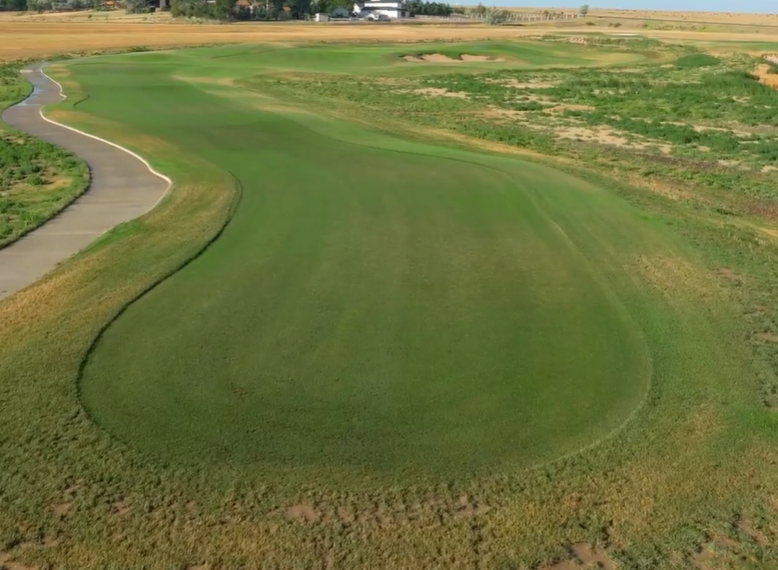
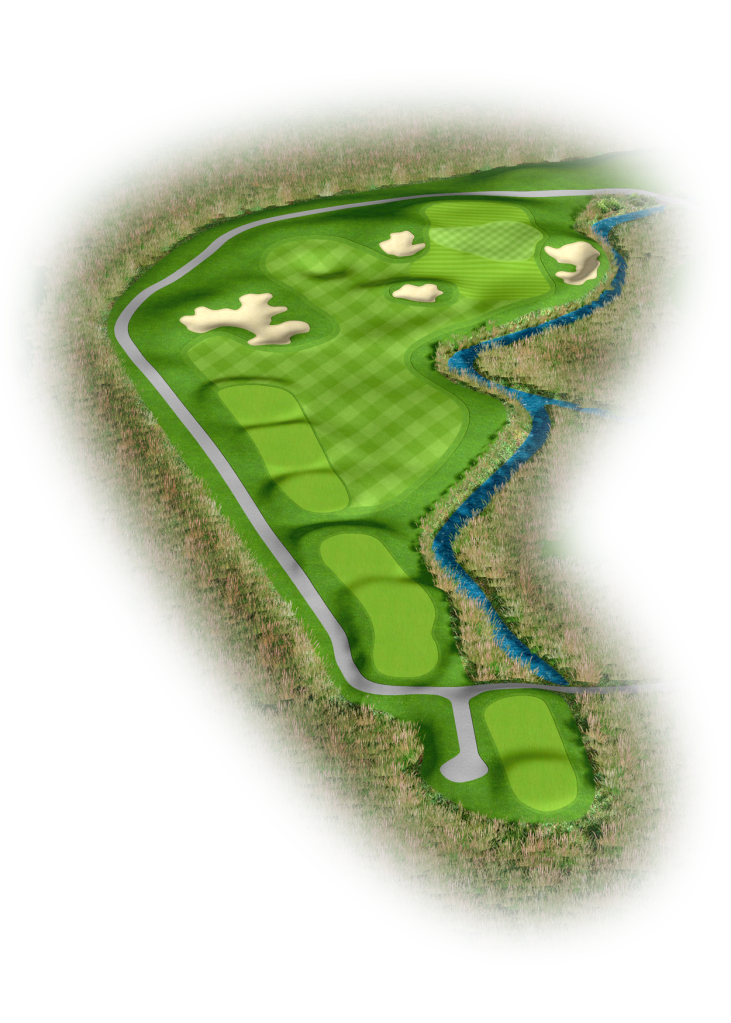
As players make the initial turn to the north to begin the trek back to the clubhouse, they will encounter the first of three short, potentially drivable par 4 holes on the golf course. This one is characterized by a deep drainage ravine that meanders down the right side of the hole. Players who dare to play aggressively towards the green will need to execute a carry over a slight oxbow in the ravine. Successfully doing that will give the players a chance at bouncing/rolling onto the green from the long, soft approach slope. A more conservative strategy off the tee will leave players with a more challenging approach angle to the green as the further left they play off the tee, the more they will need to carry over the deep greenside bunker on the left of the green surface. The green surface is generally a plateau, falling off on the other three sides. The lack of any support slopes behind or along the green will create a little more tension for players playing from a lay-up in the fairway. With a short iron or wedge in hand though, an accurate approach shot and a chance at birdie is still within the realm for all players.
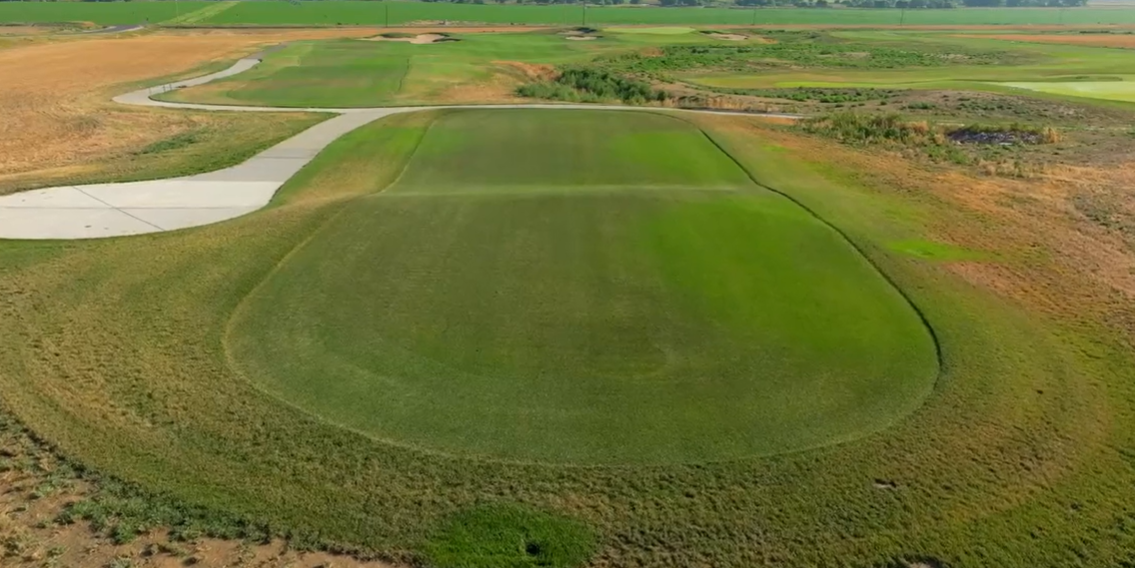
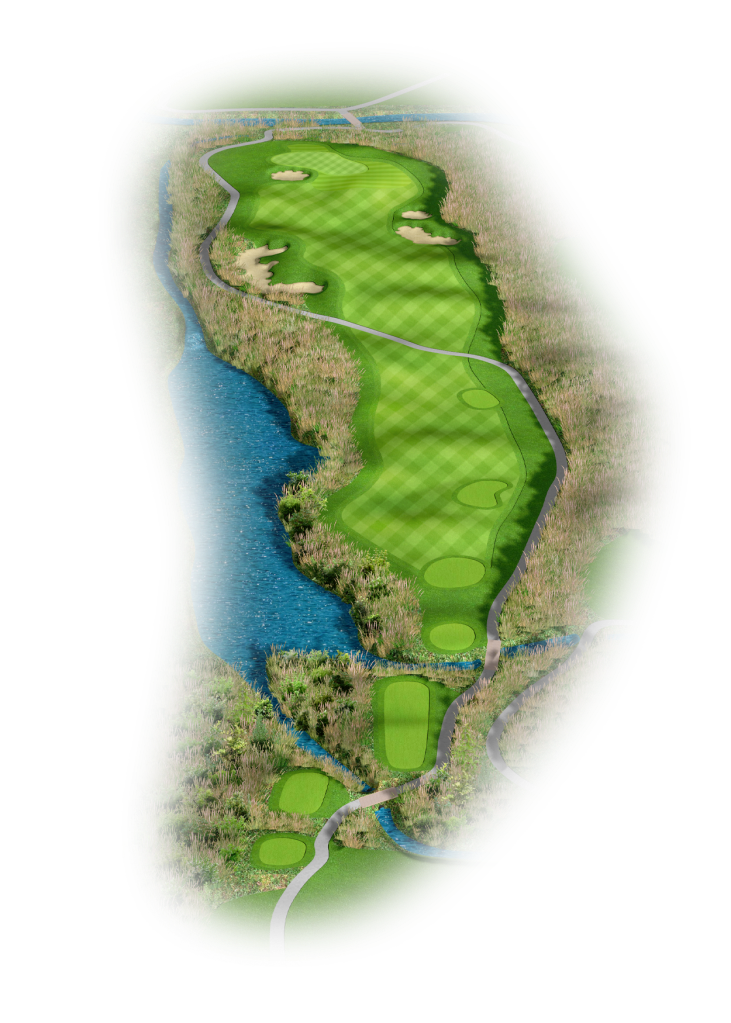
After an interesting, short par 4 hole, players will now encounter a strong par 5 hole. This longer par 5 has a lot of undulation in the fairway and plays uphill from tee to green. A deep detention basin area along the left defines the tee shot. Additionally, a strong ridge in the fairway at the landing area serves to create another layer of strategy as shots played over this ridge will benefit with a strong kick forward into a nice flat lie and a good angle from which to play a second shot. Tee shots played more conservatively to the right will land into a long upslope that will likely kill the forward momentum, leaving a longer second shot from a more challenging angle. The shallow, angled green surface is best approached from the right side, but a ridge with two bunkers set into it serves to protect that desired position for the approach shot. The “line of charm” is the ideal line of a hole that flirts with adjacent hazards, but which gets players from the tee to green on the most direct path. There are bunker and slope influences on both the left and right of the hole that serve to define the line of charm on this challenging and interesting par 5.
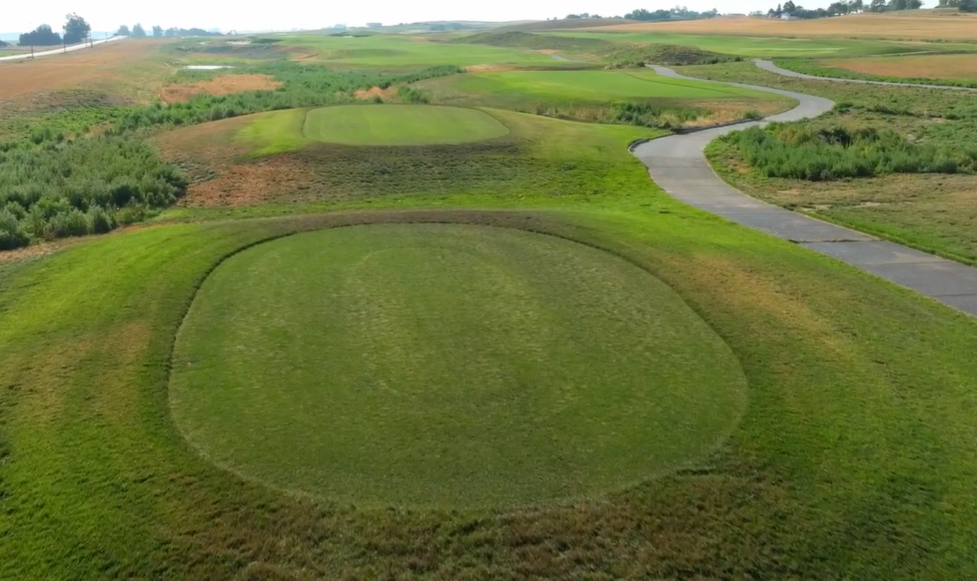
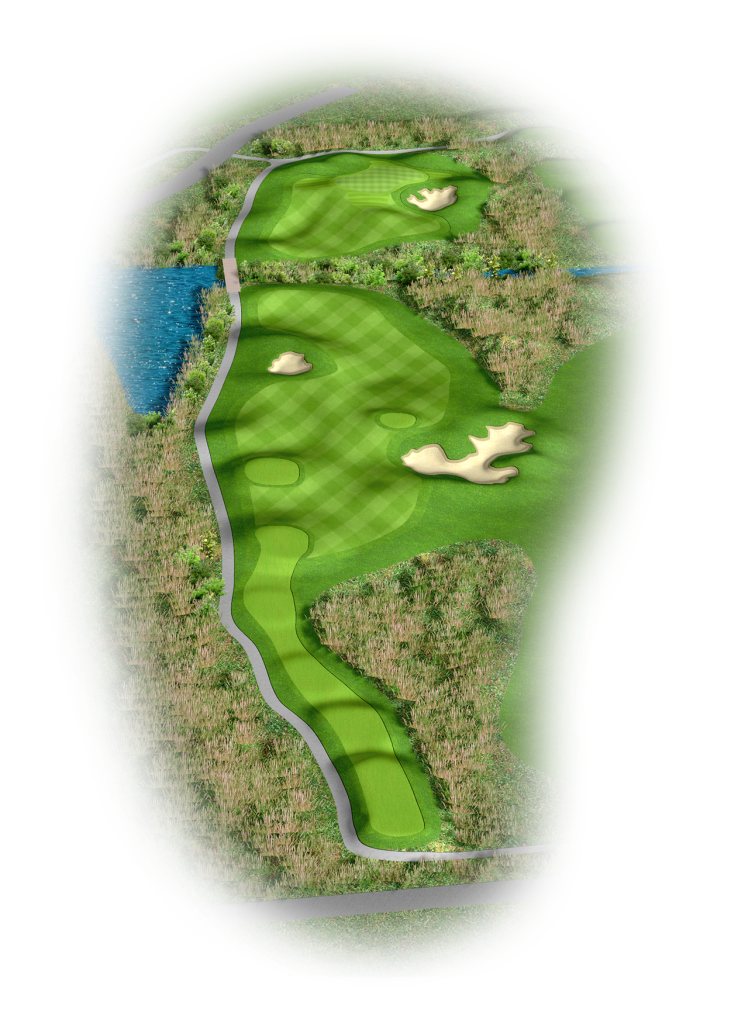
While length will be needed on both the tee shot and the second shot on this longer par 4-hole, accuracy will also be a primary concern here. Players will need to thread a strong tee shot into a narrow fairway area between a small but deep pot bunker on the left and a large, cavernous bunker on the right. A strong ridge runs diagonally across the fairway between the bunkers, and it is paramount that players carry this ridge if they want to have any chance of reaching the green in two. A native drainageway bisects the hole between the landing area and the green, creating another mandatory carry for players to negotiate. The approach shot to the green will need to carry the drainageway and then carry the steep fairway slope short of the green if they hope to land on the green in two shots. After a subtle opening stretch of holes, the golf is continuing to ratchet up in interest and challenge as two good shots will be required here to have chance at birdie or par.
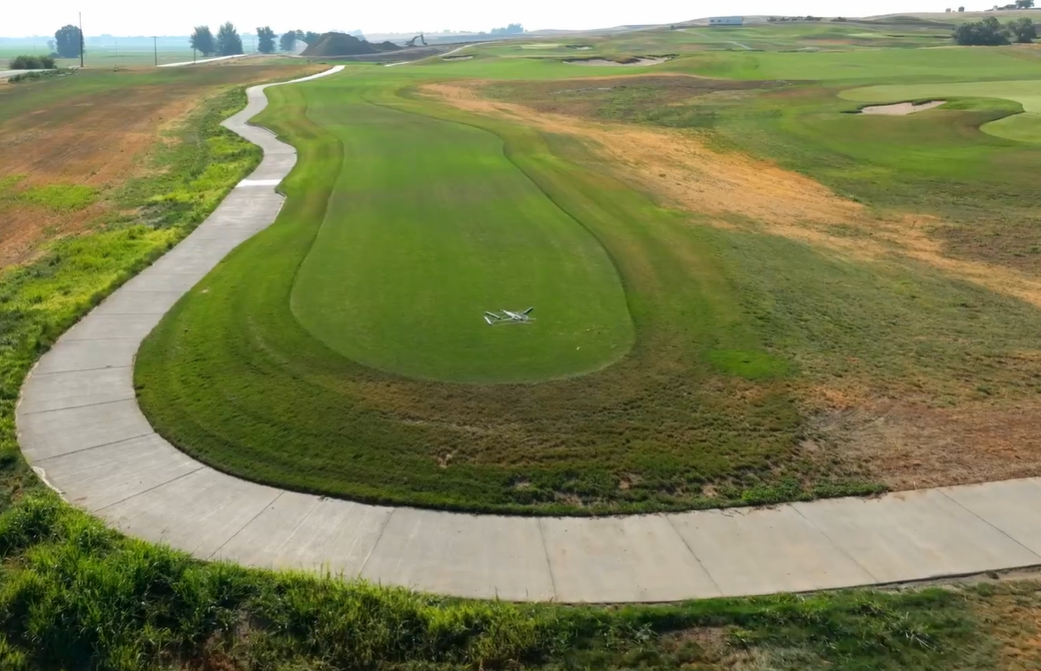
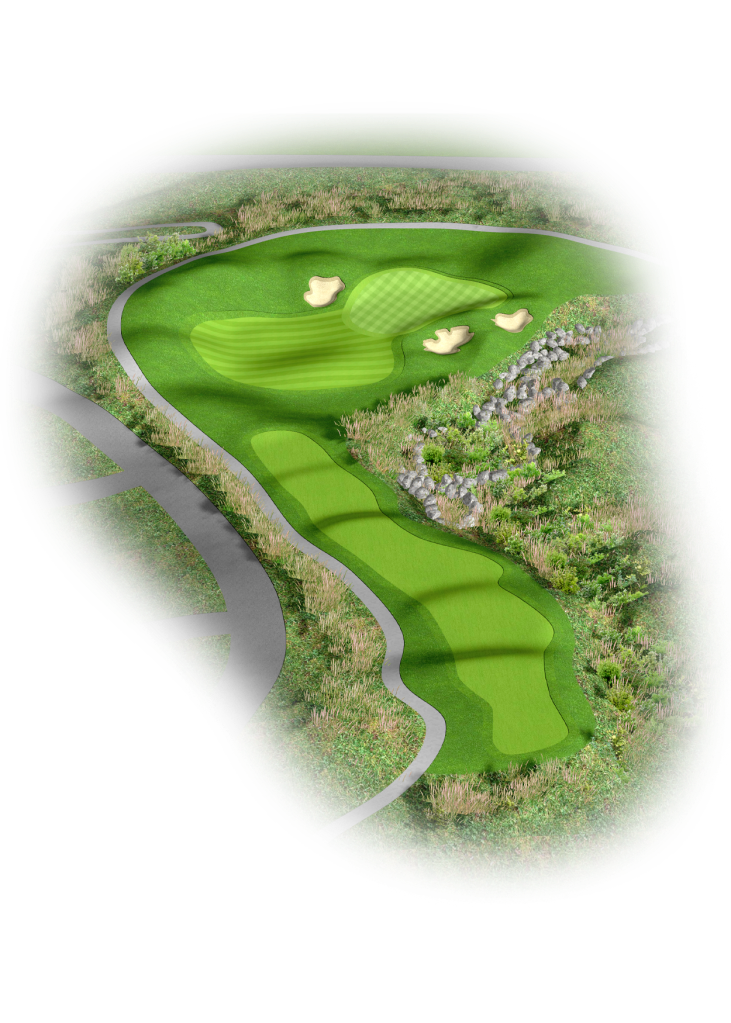
After an opportunity to reload on food and drinks after hole 6, players drop into a separate valley for the next segment of golf holes. This segment begins with another mid-length par 3, with this one playing steeply downhill from tee to green. The rather large, somewhat subtle green surface sits in full view from the tees. Three smaller, pot-style bunkers are positioned around the green creating a well-defined bullseye for players to aim at. The green falls off in three directions from a high point near the middle, so shots played into the correct section of the green will give players the best chance at making a putt for birdie.
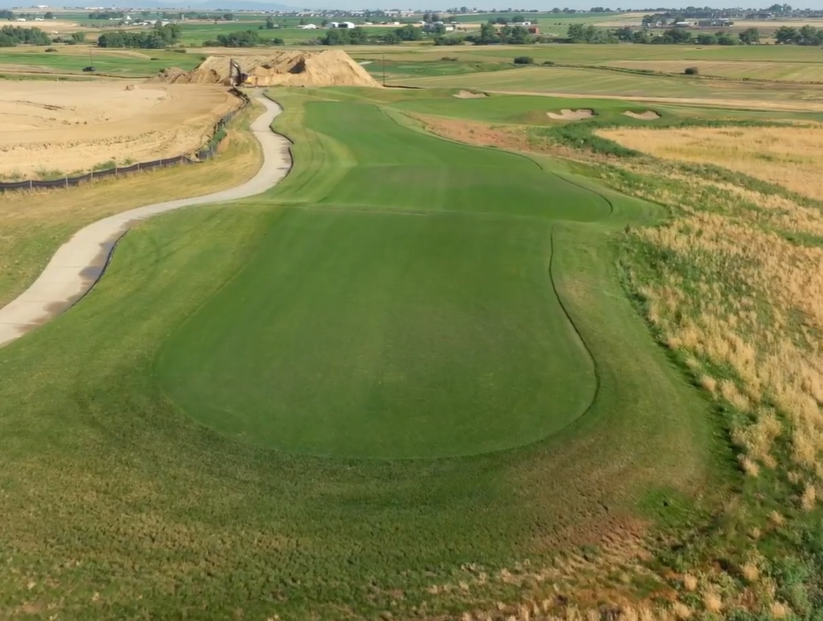
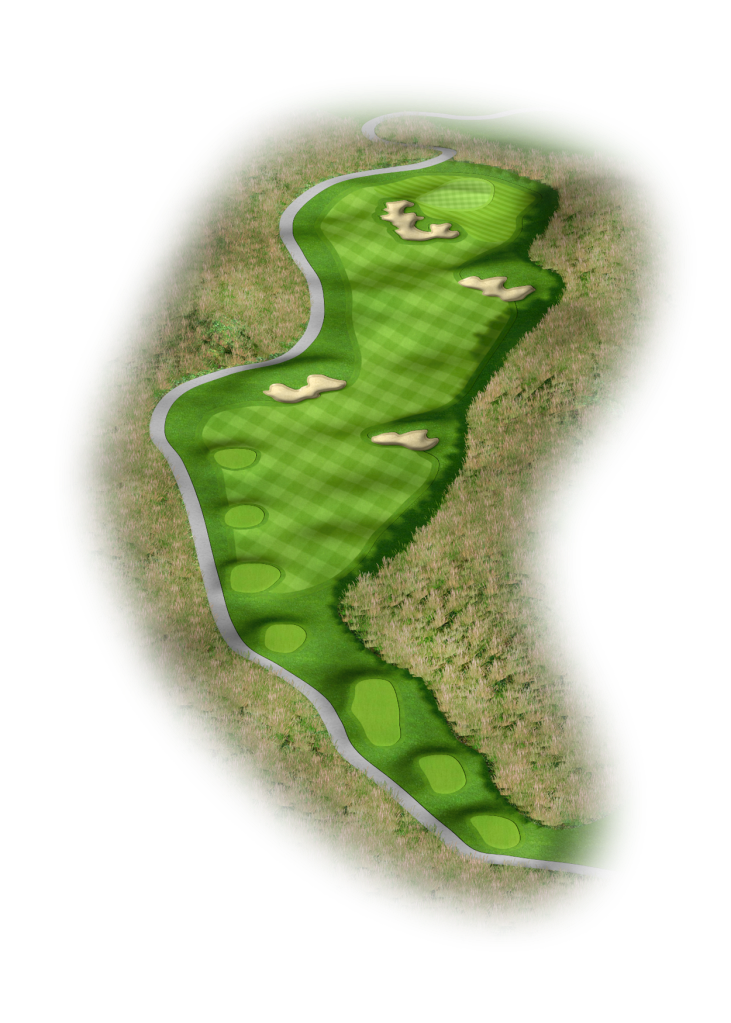
The eighth hole is one of the more natural holes on the property. The valley floor set up perfectly for a short par 5 playing up the valley with the green positioned on a small hillock that extended out from the surrounding hillside. All that needed to be added were a few bunkers to help create some risk/reward strategy considerations for the players. The offset positioning of the bunkers on either side of the fairway will create a variety of risk/reward considerations and strategic options for players to consider and attempt as they set up either a short approach shot for third shot or try to reach the green in two shots for an eagle putt. The green has a strong slope running across the middle that will create two distinct options for hole locations. A small flat area above the greenside bunker at the front of the green will allow longer shots to bounce onto the green, while slight misses left or right will leave players with challenging chips shots from below the green surface.
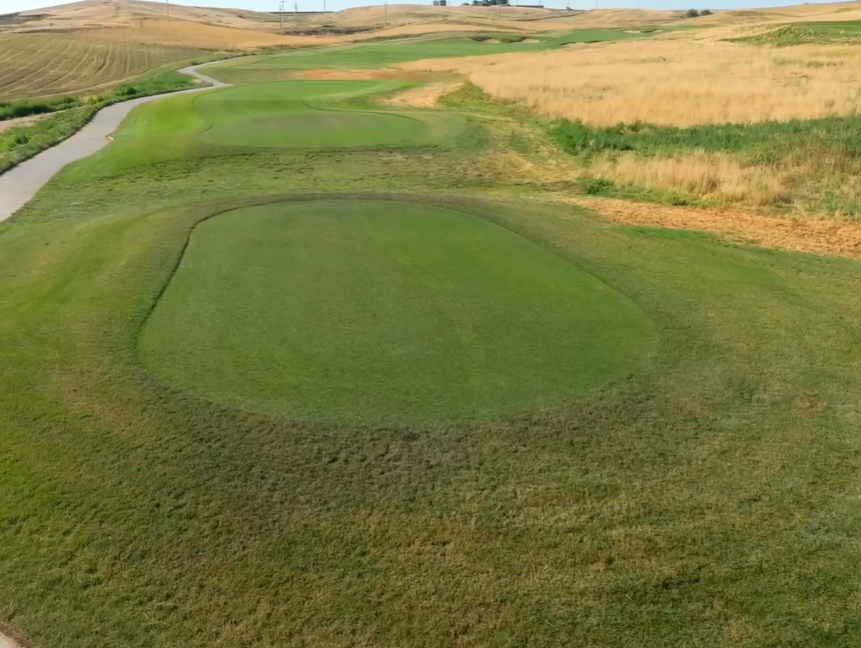

The front nine finishes up with the second of the three short par 4 holes. Whereas hole 8 set up wonderfully playing up the valley floor, hole 9 sets up equally wonderfully playing back downhill along the top of a narrow ridge. The green is set into a natural ridge and with the downhill nature of the hole, it is going to be reachable for a lot of players off the tee. Players laying up in the fairway to set up a short approach shot will need to be accurate with their tee shot. The fairway straddles the top of the ridge and falls off on both sides, creating a relatively narrow “safe zone” on top of the ridge. Shots hit too far left will be carried further left and down the slope with the fairway turf, while shots hit too far right will end up in the native grasses, leaving players questionable lies. The green surface is relatively subtle, but missing the green will leave players with a variety of challenging chip shots from below the green.
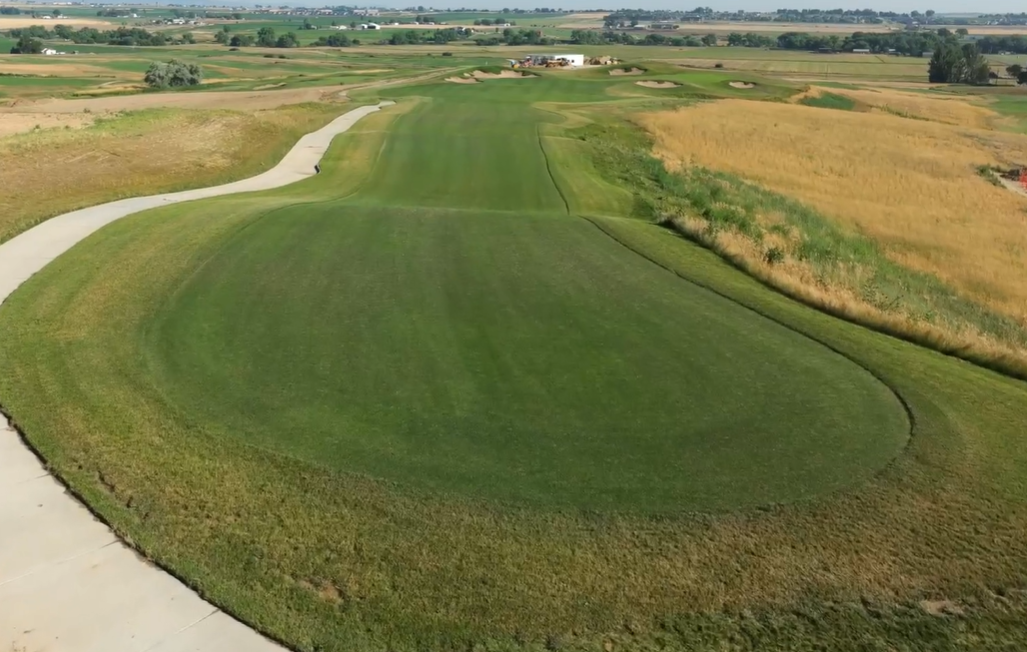
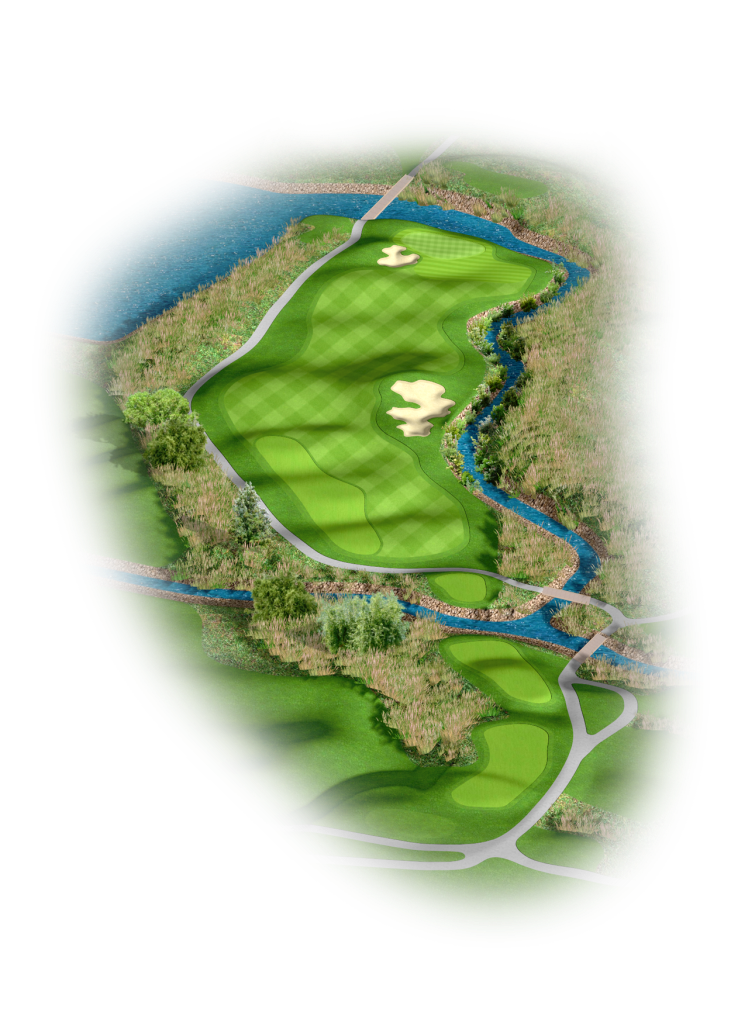
The back nine begins with a challenging par 4. While it isn’t overly long, subtle and deceptive challenges will need to be discovered and overcome by the players in order to create good opportunities for birdies or pars. The elevated tees play across the valley bottom to an uphill sloping fairway. The dramatic and deep fairway bunker on the inside of the dogleg should be avoided at all costs, yet playing the tee shot close to the bunker gives players the best chance at reaching the top of the fairway and gaining some additional yardage running out down the far slope towards the green. The further left the tee shot plays, the more length the player will need to reach the peak of the fairway. The green sits just above the landing area, creating a deceptive approach shot to the smallish green surface that players will not be able to see from the landing area. A valley running through the middle of the green will be home to the most accessible hole locations and will collect a lot of approach shots, giving players great opportunities for one-putts or possibly to hole out from the fairway. Conversely, the hole locations to the left will require a precise shot that must carry the fronting bunker, while the hole locations to the right will need to hold a small plateau.
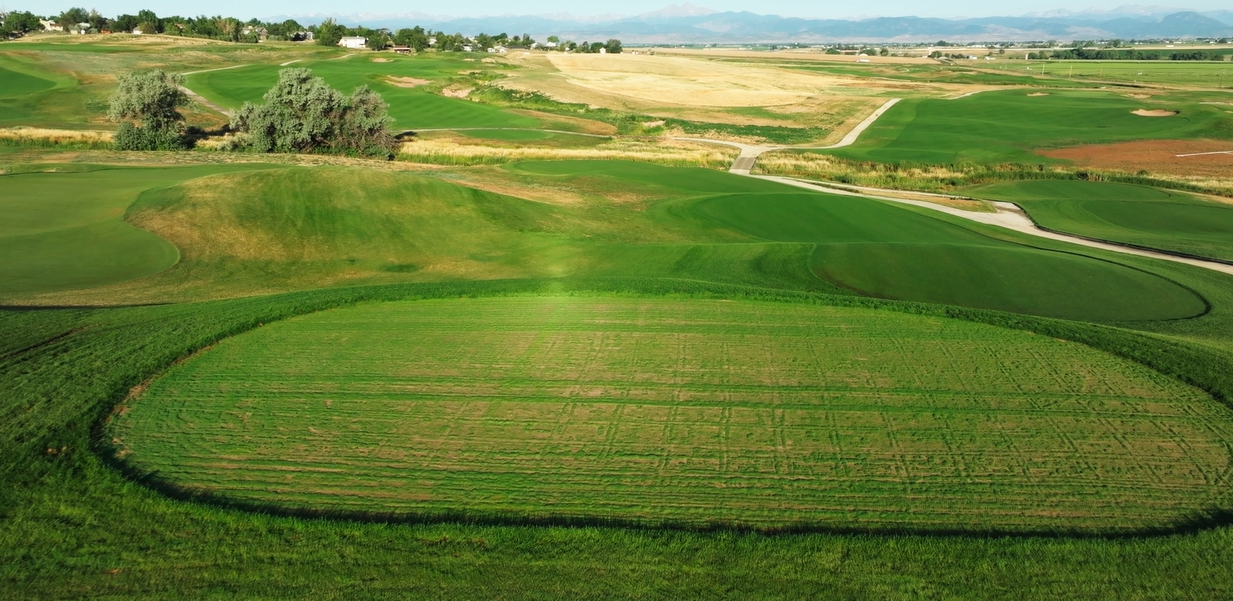
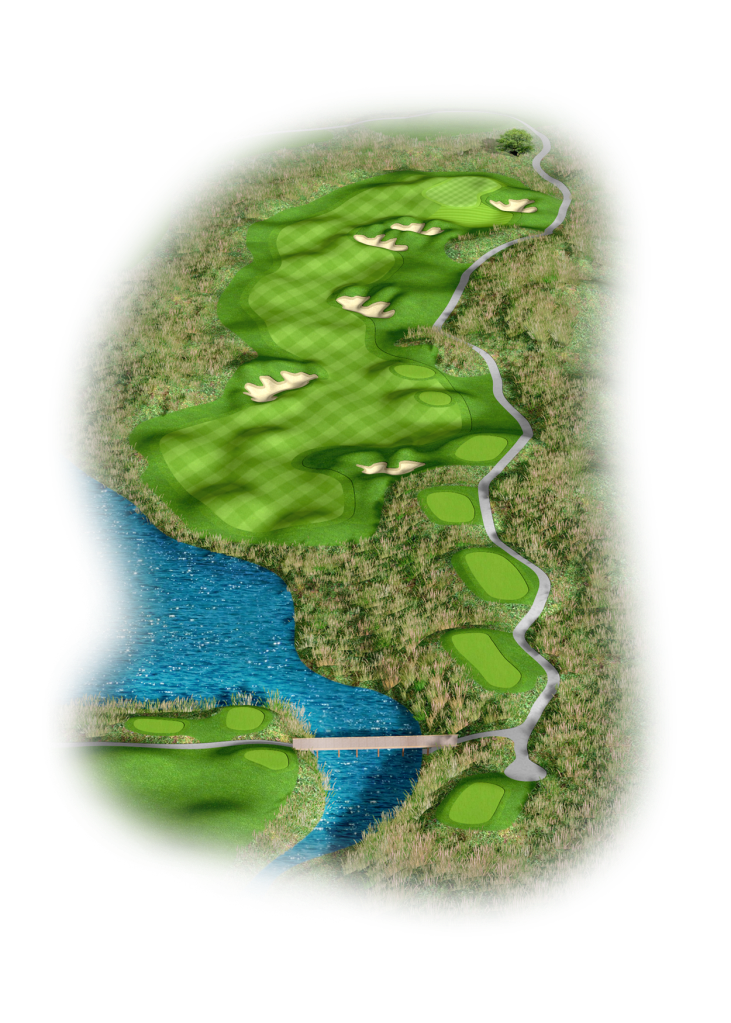
The eleventh hole is another natural par 5 setting similar to hole 8, playing up a deep valley with a lot of drama, interest and strategic options. The tee shot plays over either a high ridge to the blind landing area or across and along the pond to the left to the fairway that can be seen. Players will need to consider the hole name and play the hole a few times to determine their best approach to the strategic options and various angles of approach to the slippery green setting. While the tee shot will play somewhat level across the pond or over the high ridge, the rest of the hole plays uphill to the green. Bunkers carved into the strong hillslope along the right side of the hole create a variety landing areas and heroic carries that players will need to consider as they strategize their approach to playing the hole. The hole looks benign if players keep their shots to the left…but the green is off to the right, benched into a tall hillside. The unique green is exceedingly long and exceedingly narrow. The misdirection of the hole shaping and bunker placement will challenge players to play aggressively and trust their judgement if they want to have a chance at birdie or par.
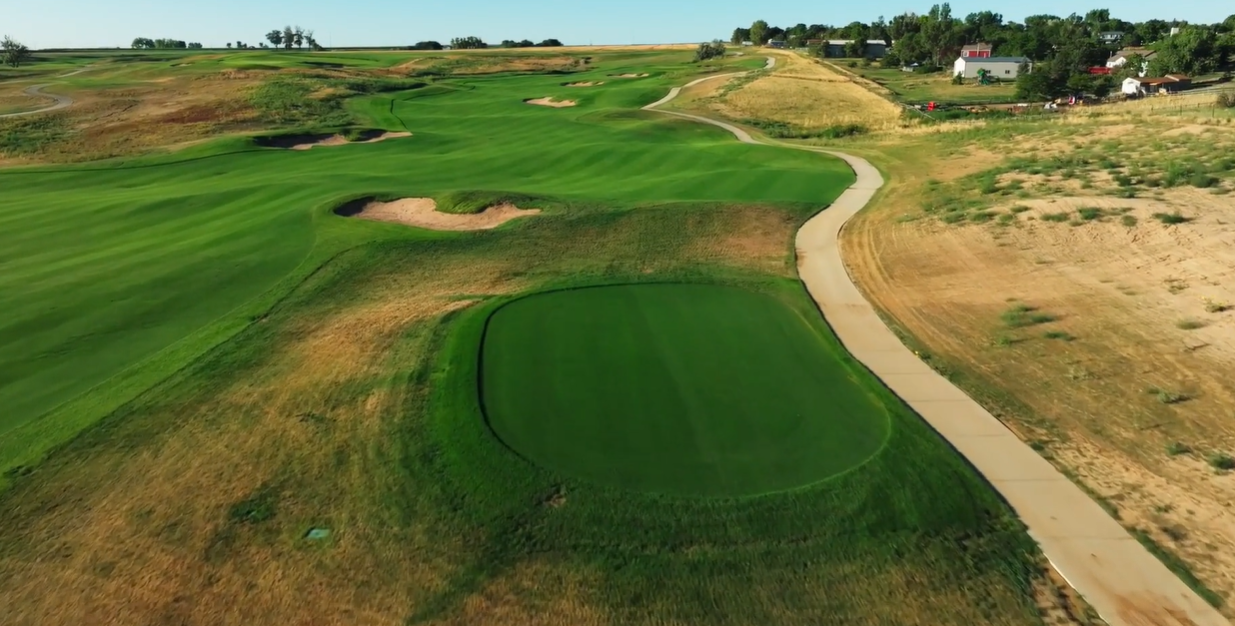

Arriving at the twelfth tee, players reach the first of many spectacular views and vistas to come throughout the rest of the back nine. After climbing uphill for two longer holes, the players will now confront the longest par 3 on the course. While the scorecard yardage will be intimidating, the hole plays downhill from tee to green, likely requiring at least a long iron or hybrid club for most players. This is the largest green on the golf course. While it is fronted along the left side by a large, deep bunker, there is also a very strong kick slope that runs into the green along the right side. Players can either play straight at the green with a high, soft shot or they can try to sling a low runner onto the green off the slope in the right side. Either way, while this will be a challenging hole, it is also going to be a beautiful spot for players to pause and appreciate the beauty of the view. This hole was in place as-is in terms of the ground movement and the natural point that comprises the green site and it highlights the natural golf opportunity that the Podtburg Family always saw with the property.
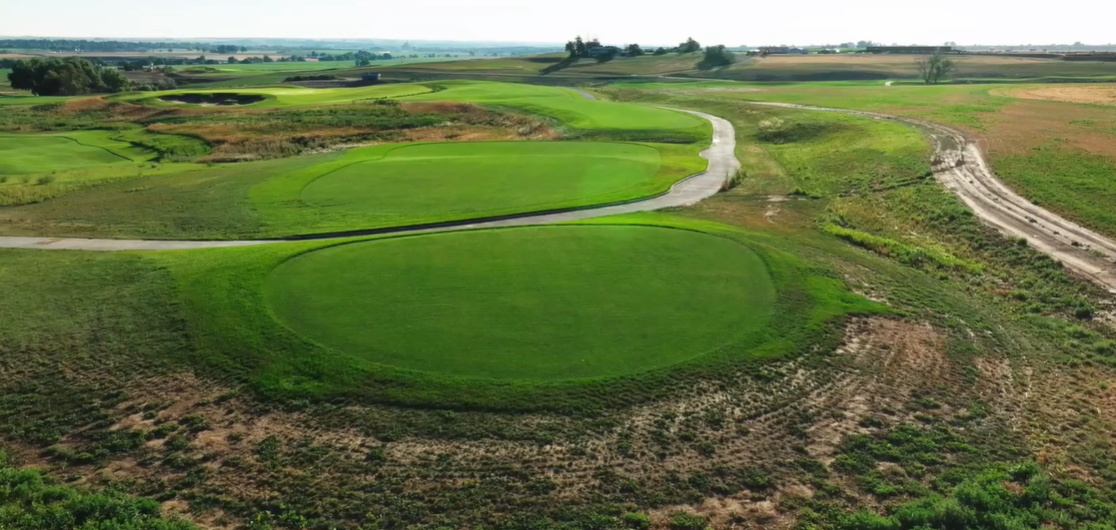
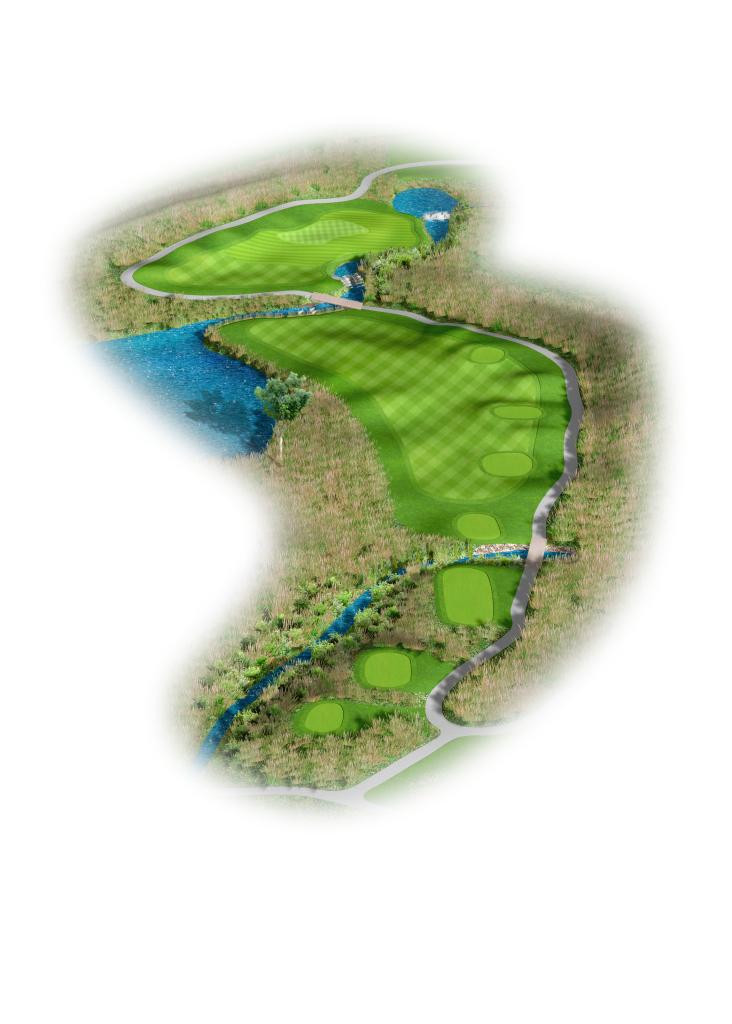
Having started the back nine with three longer holes, players now turn back to the south and encounter a shorter par 4 with a handful of challenges. The tees and beginning of the fairway are positioned along the top of a slope where the players need to make their first decision on how they want to strategize their play. A conservative tee shot will leave players with a nice flat lie on the higher portion of the fairway, but a longer approach shot into the shallow green. A more aggressive tee shot will bring the aptly-named Lost Iron Lake into play along the left side while also creating an opportunity for a long run-out down the undulating downslope of the fairway, creating a very short approach shot from a desirable angle. The green sits on a short bench, and the undulating surface rolls off on three sides. The slick bent grass surrounds will carry errant shots away from the green, leaving players with a variety of options on how to play their recovery shot. Everything from three-metal to putter will likely be used as each player tries to play to their strength.
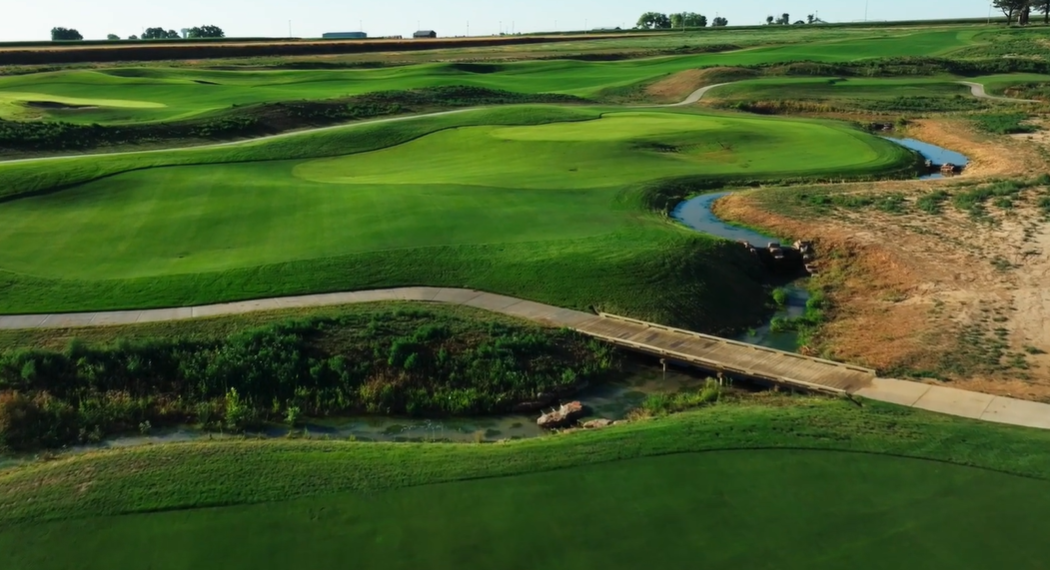
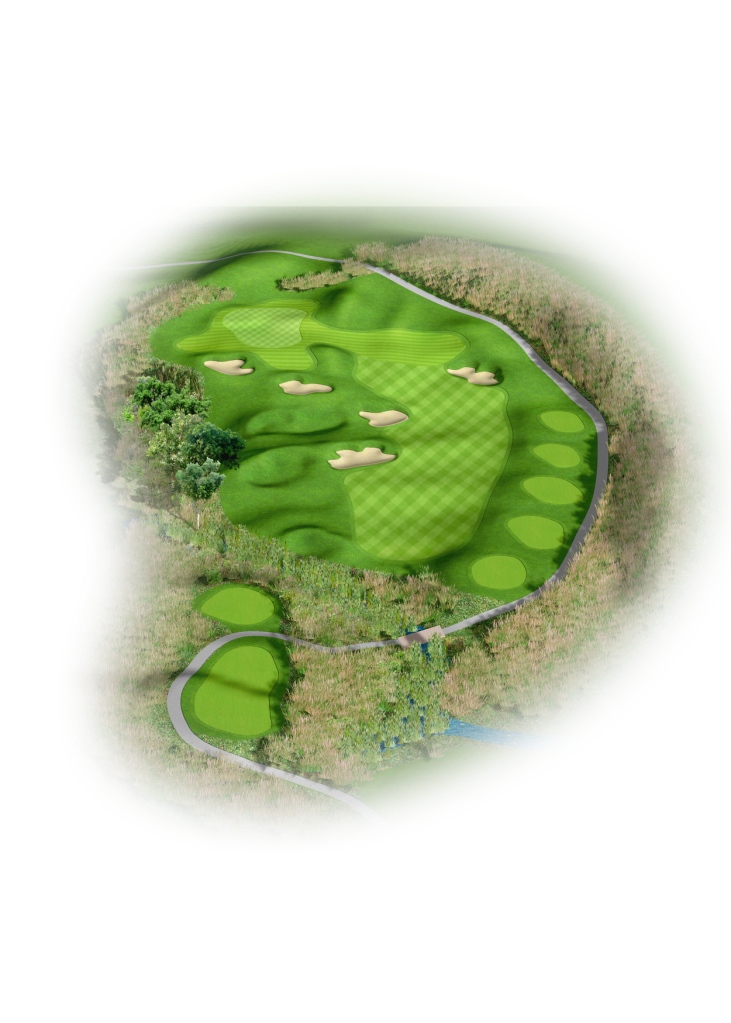
The final short, reachable par 4 of the three on the golf course is now the focus of the players. Upon looking at the scorecard, players will likely see nothing but opportunity on what looks like a very short par 4 hole. Upon arriving at the tee, players will realize that the hole might not be as easy as initially assumed. This is another hole that was mostly “discovered” as opposed to being “created”. Another unique piece of the property where the green was perched on a high hill that was located just to the south of a natural valley sloping down from west to east. The generally elevated tees give players a good idea of their options here though the green surface itself is blind to the players due to the fact that it sits about 30’ above most of the tees. A combination of slopes, bunkers, different heights of grass and different types of grass create a wide range of potential issues for players who go for the green and miss it. Lay-up shots do not need to be very long to create a very short approach shot, but players will be challenged to hit and hold the green from the fairway well below it. A very unique hole that should be a lot of fun for most players with the short length and wide variety of options and results that will occur.
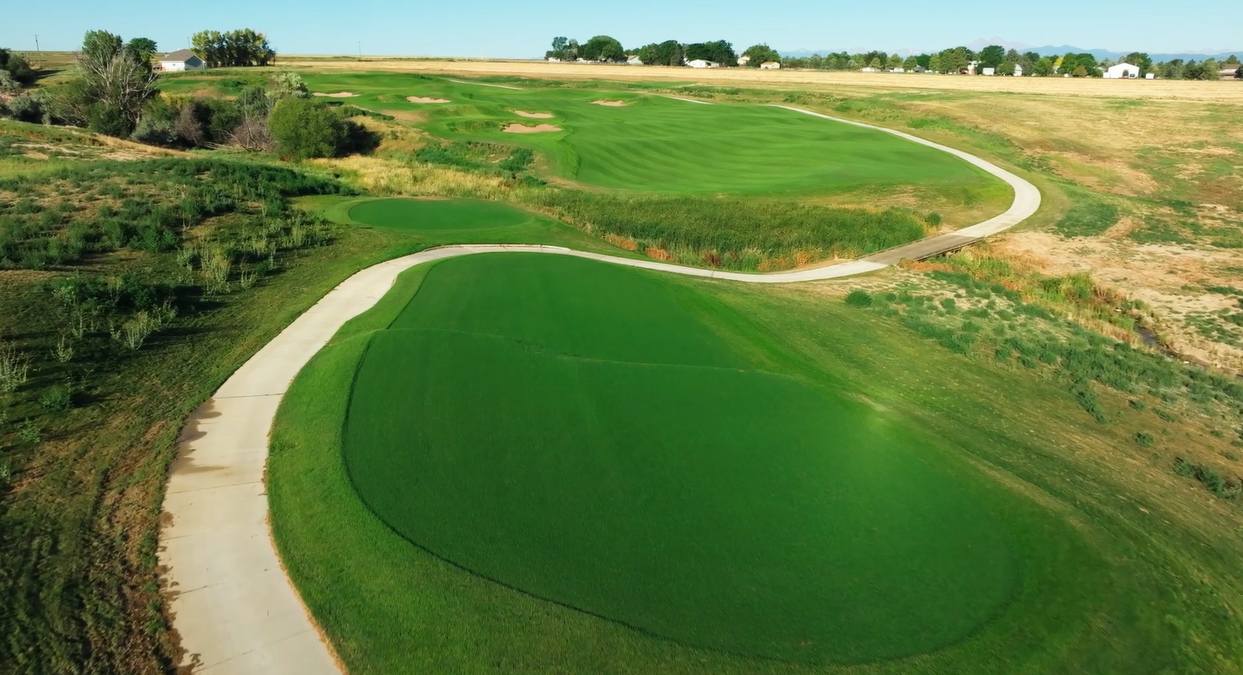
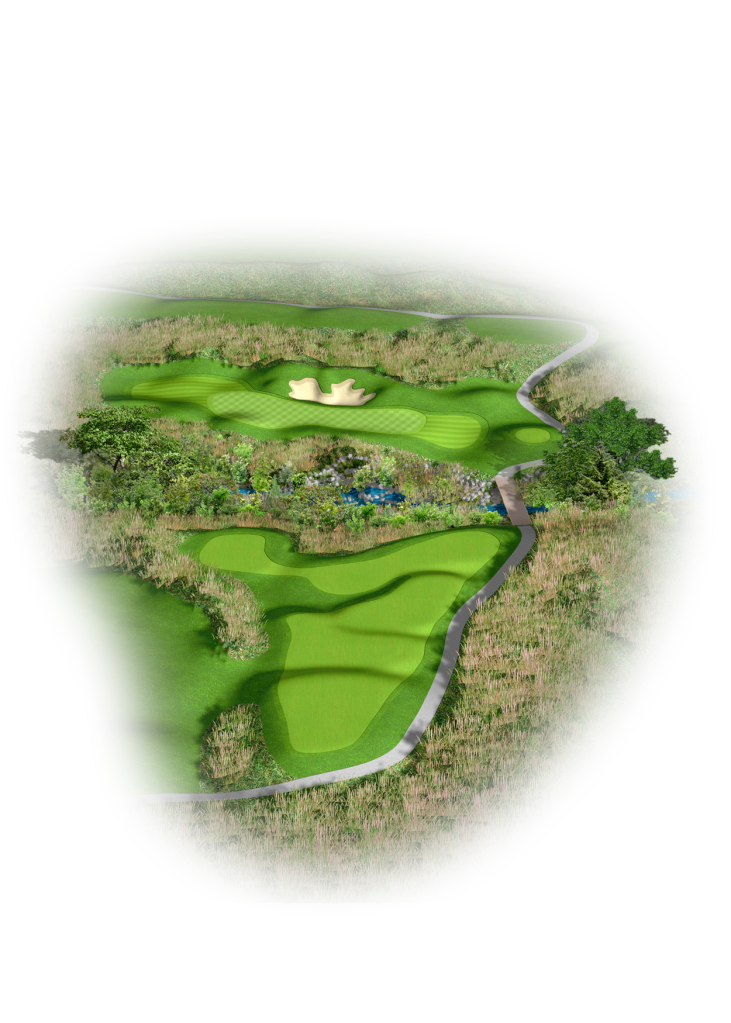
After playing the shortest par 4 on the golf course players will now play the shortest par 3 on the golf course. This par 3, like the par 3 twelfth hole, is very much a discovered hole that didn’t need to be created other than building a green and tees. This might be the most original hole on the golf course as the Podtburg family hit balls across the ravine in this location for years prior to the golf course being formally designed and built. Now all players can hit a shot across the ravine…a very short shot…to a very shallow green. While most players will likely be using a pitching wedge or maybe a nine iron, distance control will be strongly tested here, especially with the middle hole locations where the green is barely eleven paces deep and backstopped by a bunker. This final par 3 hole is full of drama, interest and challenge and is the player’s last good birdie opportunity before embarking on the long, downhill run back to the clubhouse.
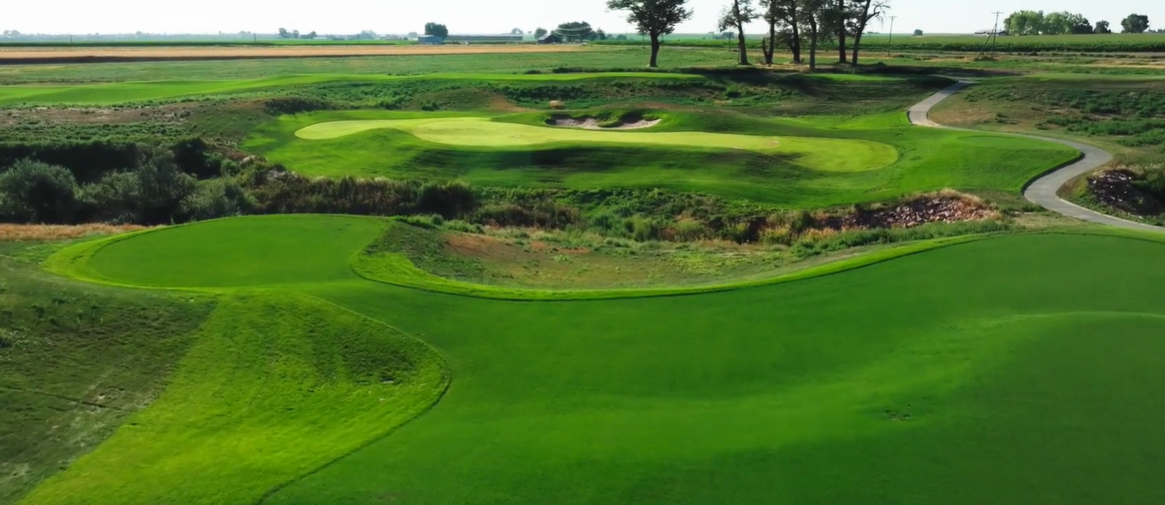
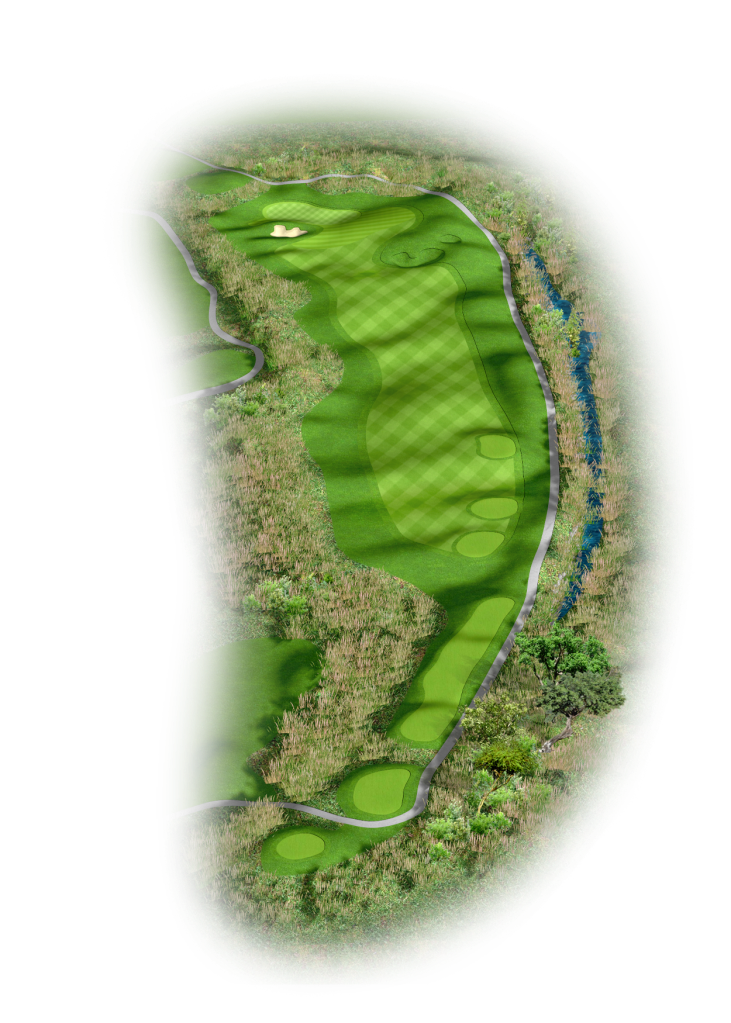
The top of the golf course, and the 5000’ elevation has been reached! After climbing uphill from the clubhouse over the first six holes of the back nine, the players now begin the long, dramatic downhill run back to the clubhouse. They’ll begin with the longest par 4 on the golf course. While the listed yardage will seem very intimidating and utterly long, the big downhill nature of the ground and the lack of any hazards on the former site of the Longs Peak Diary will give players a great opportunity “grip it and rip it” with confidence and nothing to fear. The strong undulations in the fairway will create many opportunities for balls to bound further down the hole. The approach shot to the green will likely be long and will play a little longer than the yardage will indicate as it will be slightly back uphill to an amphitheater green. The green is relatively small and divided into a lower front half and an upper back shelf.
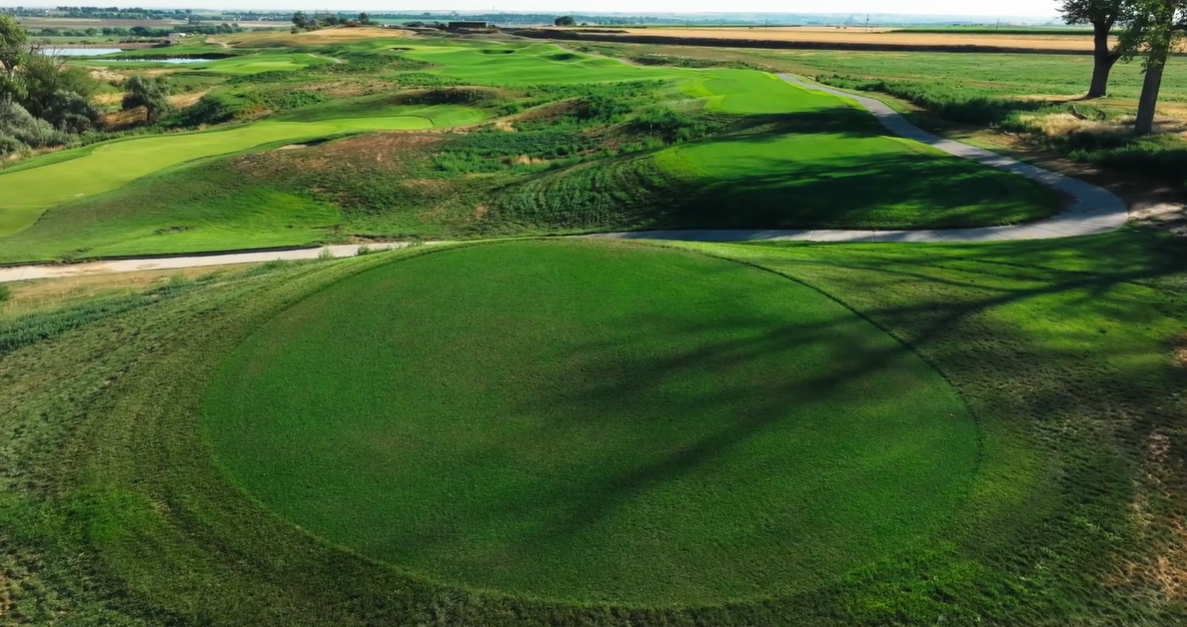
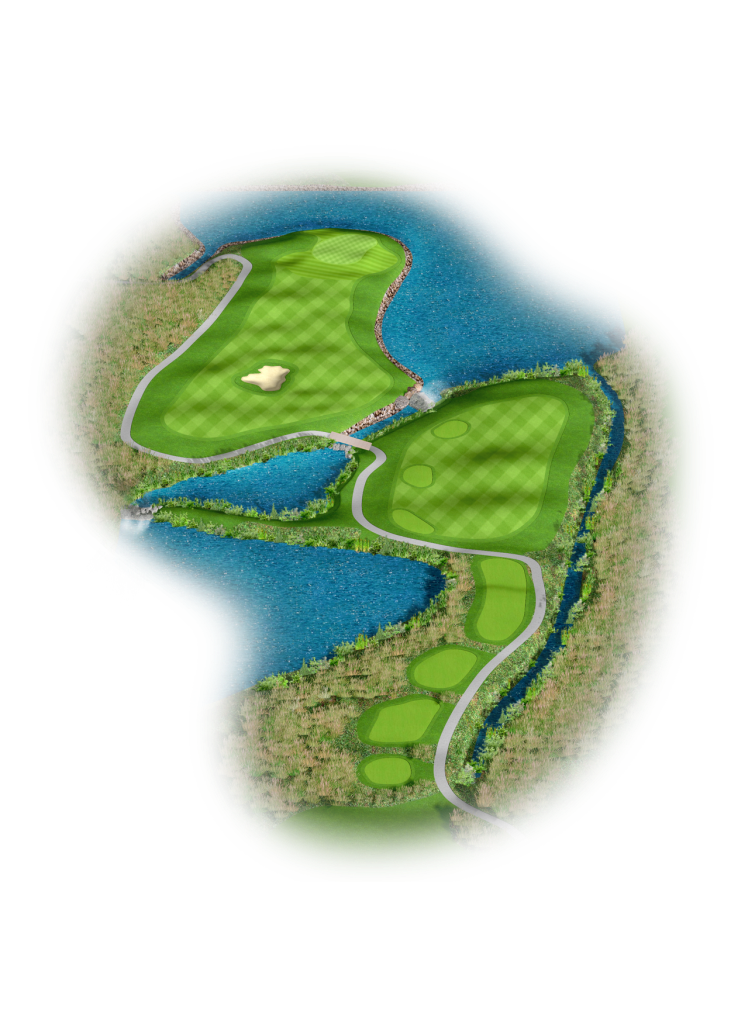
Hole 17 is one of the more unique holes on the golf course. Inspired by Alister MacKenzie’s famous “Lido Hole”, which provided five distinct lines of play to multiple fairways across a wide area, the seventeenth hole at Bella Ridge will also give players distinct and separate fairway options for their strategic consideration on the tee. Ponds to the left of the tee are connected to the pond right of the green with a narrow creek. Players will need to decide how bold they want to be with their tee shot. The shortest route to the hole is the straightest route, and this route is framed by a bunker on the left, a pond on the right and will require the boldest and longest carry over the left-side pond and creek. The reward will be a very straightforward approach shot with no hazards between the player and the green. Playing further to the left will allow players to have a shorter carry over the pond. This bolder option off the tee will remove the forced carry over the large pond to the right on the second shot, but it will leave players with a blind shot to the green as tall ridges extending across the fairway will block a clear view of the green surface. The bold option to the right removes the forced carry aspect of the tee shot, but players will need to focus in on where they try to position their tee shot on what looks like a large expanse of fairway. A strong ridge extends across the fairway in the ideal landing area. Tee shots played short of this ridge will leave players with a full carry, 200-yard second shot across the lake. Players attempting to play beyond this ridge in order to shorten the second shot will bring the lake into play both on the left side as well as at the end of the fairway. There are a multitude of options for players to consider on this highly interesting, penultimate hole.
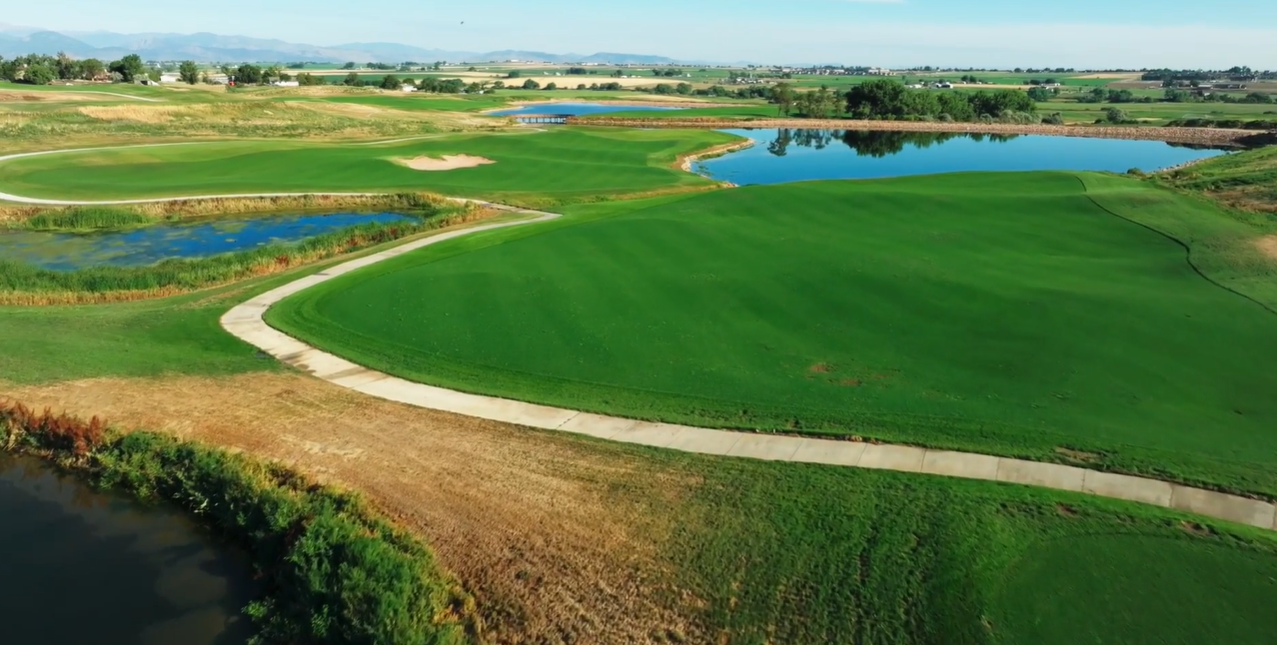
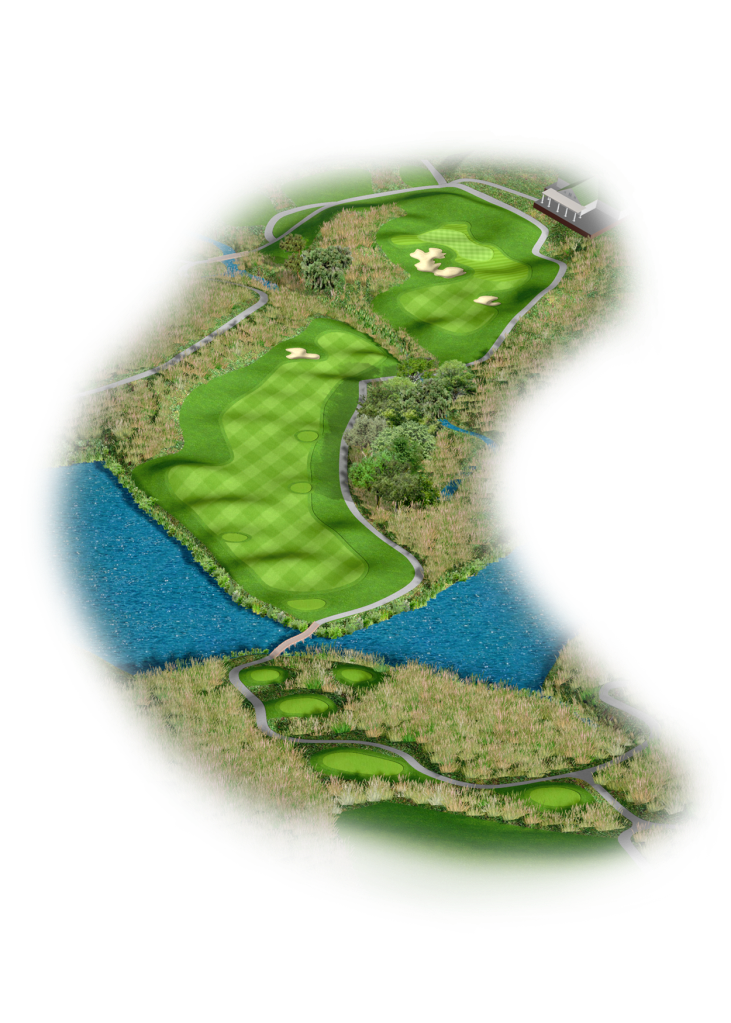
The round of golf at Bella Ridge finishes with the longest hole on the golf course. This par 5 plays downhill from the tees to what is effectively two distinct fairway options. Shorter tee shots or tee shots hit the left will land on a very flat section of fairway that won’t help shots advance further down the hole.
